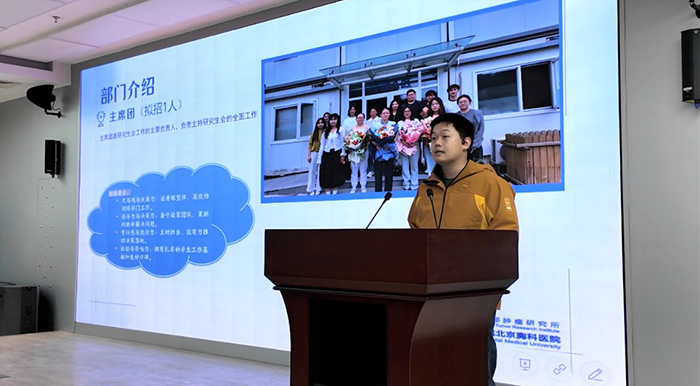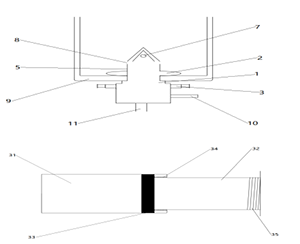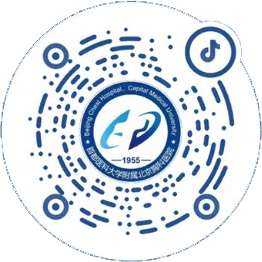2019年
No.15
Medical Abstracts
Keyword: tuberculosis
1. Acc Chem Res. 2019 Aug 20;52(8):2340-2348. doi: 10.1021/acs.accounts.9b00275.
Epub 2019 Jul 30.
Harnessing Biological Insight to Accelerate Tuberculosis Drug Discovery.
de Wet TJ(1)(2), Warner DF(1)(3), Mizrahi V(1)(3).
Author information:
(1)SAMRC/NHLS/UCT Molecular Mycobacteriology Research Unit and DST/NRF Centre of
Excellence for Biomedical TB Research, Department of Pathology and Institute of
Infectious Disease and Molecular Medicine , University of Cape Town ,
Observatory, Cape Town 7925 , South Africa.
(2)Department of Integrative Biomedical Sciences , University of Cape Town ,
Observatory, Cape Town 7925 , South Africa.
(3)Wellcome Centre for Infectious Disease Research in Africa , University of Cape
Town , Observatory, Cape Town 7925 , South Africa.
Tuberculosis (TB) is the leading cause of mortality globally resulting from an
infectious disease, killing almost 1.6 million people annually and accounting for
approximately 30% of deaths attributed to antimicrobial resistance (AMR). This
despite the widespread administration of a neonatal vaccine, and the availability
of an effective combination drug therapy against the causative agent,
Mycobacterium tuberculosis (Mtb). Instead, TB prevalence worldwide is
characterized by high-burden regions in which co-epidemics, such as HIV, and
social and economic factors, undermine efforts to control TB. These elements
additionally ensure conditions that favor the emergence of drug-resistant Mtb
strains, which further threaten prospects for future TB control. To address this
challenge, significant resources have been invested in developing a TB drug
pipeline, an initiative given impetus by the recent regulatory approval of two
new anti-TB drugs. However, both drugs have been reserved for drug-resistant
disease, and the seeming inevitability of new resistance plus the recognized need
to shorten the duration of chemotherapy demands continual replenishment of the
pipeline with high-quality "hits" with novel mechanisms of action. This
represents a massive challenge, which has been undermined by key gaps in our
understanding of Mtb physiology and metabolism, especially during host infection.
Whereas drug discovery for other bacterial infections can rely on predictive in
vitro assays and animal models, for Mtb, inherent metabolic flexibility and
uncertainties about the nutrients available to infecting bacilli in different
host (micro)environments instead requires educated predictions or demonstrations
of efficacy in animal models of arguable relevance to human disease. Even
microbiological methods for enumeration of viable mycobacterial cells are fraught
with complication. Our research has focused on elucidating those aspects of
mycobacterial metabolism that contribute to the robustness of the bacillus to
host immunological defenses and applied antibiotics and that, possibly, drive the
emergence of drug resistance. This work has identified a handful of metabolic
pathways that appear vulnerable to antibiotic targeting. Those highlighted, here,
include the inter-related functions of pantothenate and coenzyme A biosynthesis
and recycling and nucleotide metabolism-the last of which reinforces our view
that DNA metabolism constitutes an under-explored area for new TB drug
development. Although nonessential functions have traditionally been
deprioritized for antibiotic development, a common theme emerging from this work
is that these very functions might represent attractive targets because of the
potential to cripple mechanisms critical to bacillary survival under stress (for
example, the RelMtb-dependent stringent response) or to adaptability under
unfavorable, potentially lethal, conditions including antibiotic therapy (for
example, DnaE2-dependent SOS mutagenesis). The bar, however, is high:
demonstrating convincingly the likely efficacy of this strategy will require
innovative models of human TB disease. In the concluding section, we focus on the
need for improved techniques to elucidate mycobacterial metabolism during
infection and its impact on disease outcomes. Here, we argue that developments in
other fields suggest the potential to break through this barrier by harnessing
chemical-biology approaches in tandem with the most advanced technologies. As
researchers based in a high-burden country, we are impelled to continue
participating in this important endeavor.
DOI: 10.1021/acs.accounts.9b00275
PMCID: PMC6704484
PMID: 31361123
2. Lancet Infect Dis. 2019 Aug 22. pii: S1473-3099(19)30420-7. doi:
10.1016/S1473-3099(19)30420-7. [Epub ahead of print]
Improving the cascade of global tuberculosis care: moving from the "what" to the
"how" of quality improvement.
Agins BD(1), Ikeda DJ(2), Reid MJA(3), Goosby E(3), Pai M(4), Cattamanchi A(5).
Author information:
(1)HEALTHQUAL, Institute for Global Health Sciences, University of California,
San Francisco, CA, USA; Division of Global Epidemiology, University of
California, San Francisco, CA, USA; Institute for Implementation Science in
Population Health, City University of New York, NY, USA. Electronic address:
bruce.agins@ucsf.edu.
(2)HEALTHQUAL, Institute for Global Health Sciences, University of California,
San Francisco, CA, USA; Harvard Medical School, Boston, MA, USA.
(3)Division of HIV, Infectious Diseases and Global Medicine, University of
California, San Francisco, CA, USA.
(4)McGill International TB Centre, McGill University, Montreal, Canada.
(5)Division of Pulmonary and Critical Care Medicine, University of California,
San Francisco, CA, USA.
Tuberculosis is preventable, treatable, and curable, yet it has the highest
mortality rate of infectious diseases worldwide. Over the past decade, services
to prevent, screen, diagnose, and treat tuberculosis have been developed and
scaled up globally, but progress to end the disease as a public health threat has
been slow, particularly in low-income and middle-income countries. In these
settings, low-quality tuberculosis prevention, diagnostic, and treatment services
frustrate efforts to translate use of existing tools, approaches, and treatment
regimens into improved individual and public health outcomes. Increasingly
sophisticated methods have been used to identify gaps in quality of tuberculosis
care, but inadequate work has been done to apply these findings to activities
that generate population-level improvements. In this Personal View, we contend
that shifting the focus from the "what" to the "how" of quality improvement will
require National Tuberculosis Programmes to change the way they organise, use
data, implement, and respond to the needs and preferences of people with
tuberculosis and at-risk communities.
Copyright © 2019 Elsevier Ltd. All rights reserved.
DOI: 10.1016/S1473-3099(19)30420-7
PMID: 31447305
3. Nat Chem Biol. 2019 Sep;15(9):889-899. doi: 10.1038/s41589-019-0336-0. Epub 2019
Aug 19.
Mycobacterium tuberculosis releases an antacid that remodels phagosomes.
Buter J(1), Cheng TY(1), Ghanem M(2), Grootemaat AE(3), Raman S(1), Feng X(4),
Plantijn AR(5), Ennis T(1), Wang J(2), Cotton RN(1), Layre E(1), Ramnarine AK(1),
Mayfield JA(1), Young DC(1), Jezek Martinot A(6), Siddiqi N(6), Wakabayashi S(6),
Botella H(7), Calderon R(8), Murray M(9), Ehrt S(7), Snider BB(10), Reed MB(2),
Oldfield E(4), Tan S(11), Rubin EJ(6), Behr MA(2), van der Wel NN(3), Minnaard
AJ(5), Moody DB(12).
Author information:
(1)Division of Rheumatology, Immunology and Allergy, Brigham and Women's
Hospital, Harvard Medical School, Boston, MA, USA.
(2)Infectious Diseases and Immunity in Global Health, McGill University Health
Centre Research Institute, McGill International TB Centre, Montreal, Canada.
(3)Electron Microscopy Center Amsterdam, Department of Medical Biology, Amsterdam
UMC, Amsterdam, the Netherlands.
...
Mycobacterium tuberculosis (Mtb) is the world's most deadly pathogen. Unlike less
virulent mycobacteria, Mtb produces 1-tuberculosinyladenosine (1-TbAd), an
unusual terpene nucleoside of unknown function. In the present study 1-TbAd has
been shown to be a naturally evolved phagolysosome disruptor. 1-TbAd is highly
prevalent among patient-derived Mtb strains, where it is among the most abundant
lipids produced. Synthesis of TbAd analogs and their testing in cells demonstrate
that their biological action is dependent on lipid linkage to the 1-position of
adenosine, which creates a strong conjugate base. Furthermore, C20 lipid moieties
confer passage through membranes. 1-TbAd selectively accumulates in acidic
compartments, where it neutralizes the pH and swells lysosomes, obliterating
their multilamellar structure. During macrophage infection, a 1-TbAd biosynthesis
gene (Rv3378c) confers marked phagosomal swelling and intraphagosomal inclusions,
demonstrating an essential role in regulating the Mtb cellular microenvironment.
Although macrophages kill intracellular bacteria through phagosome acidification,
Mtb coats itself abundantly with antacid.
DOI: 10.1038/s41589-019-0336-0
PMID: 31427817
4. Am J Respir Crit Care Med. 2019 Aug 5. doi: 10.1164/rccm.201904-0772OC. [Epub
ahead of print]
Tuberculosis Diagnosis in Children Using Xpert Ultra on Different Respiratory
Specimens.
Zar HJ(1)(2), Workman LJ(3)(4), Prins M(5), Bateman LJ(1), Mbhele SP(1), Whitman
CB(1), Denkinger CM(6), Nicol MP(1).
Author information:
(1)University of Capetown, Pediatrics & Child Health, Cape Town, South Africa.
(2)MRC Unit on Child & Adolescent Health, University of Cape Town, Cape Town,
South Africa; Heather.Zar@uct.ac.za.
(3)University of Cape Town Faculty of Health Sciences, 63726, Paediatrics and
Child Health, Observatory, South Africa.
...
RATIONALE: Microbiological confirmation of pulmonary tuberculosis in children is
desirable.
OBJECTIVES: To investigate the diagnostic accuracy and incremental yield of
Xpert-Ultra, a new rapid test, on repeated induced sputum, nasopharyngeal
aspirates and combinations of specimens.
METHODS: Consecutive South African children hospitalized with suspected pulmonary
tuberculosis were enrolled.
MEASUREMENTS: Induced sputum and nasopharyngeal aspirates were obtained.
Nasopharyngeal aspirates were frozen; induced sputum underwent liquid culture, an
aliquot was frozen. Ultra was performed on thawed nasopharyngeal aspirates and
induced sputum specimens individually. Children were categorised as confirmed,
unconfirmed or unlikely tuberculosis according to NIH consensus case definitions.
The diagnostic accuracy of Ultra was compared with liquid culture on induced
sputum.
MAIN RESULTS: 195 children [median age 23·3 months, 32(16·4%) HIV-infected] had
one induced sputum and nasopharyngeal aspirate; 130 had two nasopharyngeal
aspirates. There were 40(20·5%) culture confirmed cases. Ultra was positive on
nasopharyngeal aspirates in 26(13·3%) and on induced sputum in 31(15·9%).
Sensitivity and specificity of Ultra on one nasopharyngeal-aspirate were 46% and
98% respectively, similar by HIV status. Sensitivity and specificity of Ultra on
one induced sputum were 74·3% and 96·9% respectively. Combining one
nasopharyngeal aspirate and one induced sputum increased sensitivity to 80%.
Sensitivity using Ultra on two nasopharyngeal aspirates was 54.2%, increasing to
87.5% with an induced sputum Ultra.
CONCLUSIONS: Induced sputum provides a better specimen than repeated
nasopharyngeal aspirate for rapid diagnosis using Ultra. However, Ultra testing
of combinations of specimens provides a novel strategy that can be adapted to
identify most children with confirmed pulmonary tuberculosis.
DOI: 10.1164/rccm.201904-0772OC
PMID: 31381861
5. Lancet Infect Dis. 2019 Aug;19(8):903-912. doi: 10.1016/S1473-3099(19)30307-X.
Epub 2019 Jul 4.
Global burden of latent multidrug-resistant tuberculosis: trends and estimates
based on mathematical modelling.
Knight GM(1), McQuaid CF(2), Dodd PJ(3), Houben RMGJ(2).
Author information:
(1)Department of Infectious Disease Epidemiology, London School of Hygiene &
Tropical Medicine, London, UK; Centre for Mathematical Modelling of Infectious
Diseases, London School of Hygiene & Tropical Medicine, London, UK; TB Modelling
Group, TB Centre, London School of Hygiene & Tropical Medicine, London, UK.
Electronic address: gwen.knight@lshtm.ac.uk.
(2)Department of Infectious Disease Epidemiology, London School of Hygiene &
Tropical Medicine, London, UK; Centre for Mathematical Modelling of Infectious
Diseases, London School of Hygiene & Tropical Medicine, London, UK; TB Modelling
Group, TB Centre, London School of Hygiene & Tropical Medicine, London, UK.
(3)School of Health and Related Research, University of Sheffield, Sheffield, UK.
BACKGROUND: To end the global tuberculosis epidemic, latent tuberculosis
infection needs to be addressed. All standard treatments for latent tuberculosis
contain drugs to which multidrug-resistant (MDR) Mycobacterium tuberculosis is
resistant. We aimed to estimate the global burden of multidrug-resistant latent
tuberculosis infection to inform tuberculosis elimination policy.
METHODS: By fitting a flexible statistical model to tuberculosis drug resistance
surveillance and survey data collated by WHO, we estimated national trends in the
proportion of new tuberculosis cases that were caused by MDR strains. We used
these data as a proxy for the proportion of new infections caused by MDR M
tuberculosis and multiplied trends in annual risk of infection from previous
estimates of the burden of latent tuberculosis to generate trends in the annual
risk of infection with MDR M tuberculosis. These estimates were used in a cohort
model to estimate changes in the global and national prevalence of latent
infection with MDR M tuberculosis. We also estimated recent infection levels (ie,
in 2013 and 2014) and made predictions for the future burden of MDR tuberculosis
in 2035 and 2050.
FINDINGS: 19·1 million (95% uncertainty interval [UI] 16·4 million-21·7 million)
people were latently infected with MDR tuberculosis in 2014-a global prevalence
of 0·3% (95% UI 0·2-0·3). MDR strains accounted for 1·2% (95% UI 1·0-1·4) of the
total latent tuberculosis burden overall, but for 2·9% (95% UI 2·6-3·1) of the
burden among children younger than 15 years (risk ratio for those younger than 15
years vs those aged 15 years or older 2·65 [95% UI 2·11-3·25]). Recent latent
infection with MDR M tuberculosis meant that 1·9 million (95% UI 1·7 million-2·3
million) people globally were at high risk of active MDR tuberculosis in 2015.
INTERPRETATION: We estimate that three in every 1000 people globally carry latent
MDR tuberculosis infection, and prevalence is around ten times higher among those
younger than 15 years. If current trends continue, the proportion of latent
tuberculosis caused by MDR strains will increase, which will pose serious
challenges for management of latent tuberculosis-a cornerstone of tuberculosis
elimination strategies.
FUNDING: UK Medical Research Council, Bill & Melinda Gates Foundation, and
European Research Council.
Copyright © 2019 The Author(s). Published by Elsevier Ltd. This is an Open Access
article under the CC BY 4.0 license. Published by Elsevier Ltd.. All rights
reserved.
DOI: 10.1016/S1473-3099(19)30307-X
PMCID: PMC6656782
PMID: 31281059
6. Am J Respir Crit Care Med. 2019 Aug 1;200(3):370-380. doi:
10.1164/rccm.201807-1361OC.
Spatial Network Mapping of Pulmonary Multidrug-Resistant Tuberculosis Cavities
Using RNA Sequencing.
Dheda K(1)(2), Lenders L(1), Srivastava S(3)(4), Magombedze G(3), Wainwright
H(5), Raj P(4), Bush SJ(3), Pollara G(6), Steyn R(7), Davids M(1), Pooran A(1),
Pennel T(8), Linegar A(8), McNerney R(1), Moodley L(8), Pasipanodya JG(3), Turner
CT(6), Noursadeghi M(6), Warren RM(9), Wakeland E(4), Gumbo T(1)(3).
Author information:
(1)1Centre for Lung Infection and Immunity, Division of Pulmonology, Department
of Medicine and UCT Lung Institute and South African MRC/UCT Centre for the Study
of Antimicrobial Resistance, University of Cape Town, Cape Town, South Africa.
(2)2Faculty of Infectious and Tropical Diseases, Department of Immunology and
Infection, London School of Hygiene and Tropical Medicine, London, United
Kingdom.
(3)3Center for Infectious Diseases Research and Experimental Therapeutics, Baylor
Research Institute, Baylor University Medical Center, Dallas, Texas.
...
Rationale: There is poor understanding about protective immunity and the
pathogenesis of cavitation in patients with tuberculosis.Objectives: To map
pathophysiological pathways at anatomically distinct positions within the human
tuberculosis cavity.Methods: Biopsies were obtained from eight predetermined
locations within lung cavities of patients with multidrug-resistant tuberculosis
undergoing therapeutic surgical resection (n = 14) and healthy lung tissue from
control subjects without tuberculosis (n = 10). RNA sequencing,
immunohistochemistry, and bacterial load determination were performed at each
cavity position. Differentially expressed genes were normalized to control
subjects without tuberculosis, and ontologically mapped to identify a spatially
compartmentalized pathophysiological map of the cavity. In silico perturbation
using a novel distance-dependent dynamical sink model was used to investigate
interactions between immune networks and bacterial burden, and to integrate these
identified pathways.Measurements and Main Results: The median (range) lung cavity
volume on positron emission tomography/computed tomography scans was 50 cm3
(15-389 cm3). RNA sequence reads (31% splice variants) mapped to 19,049 annotated
human genes. Multiple proinflammatory pathways were upregulated in the cavity
wall, whereas a downregulation "sink" in the central caseum-fluid interface
characterized 53% of pathways including neuroendocrine signaling, calcium
signaling, triggering receptor expressed on myeloid cells-1, reactive oxygen and
nitrogen species production, retinoic acid-mediated apoptosis, and RIG-I-like
receptor signaling. The mathematical model demonstrated that neuroendocrine,
protein kinase C-θ, and triggering receptor expressed on myeloid cells-1
pathways, and macrophage and neutrophil numbers, had the highest correlation with
bacterial burden (r > 0.6), whereas T-helper effector systems did
not.Conclusions: These data provide novel insights into host immunity to
Mycobacterium tuberculosis-related cavitation. The pathways defined may serve as
useful targets for the design of host-directed therapies, and transmission
prevention interventions.
DOI: 10.1164/rccm.201807-1361OC
PMCID: PMC6680310
PMID: 30694692
7. Cell. 2019 Sep 5;178(6):1344-1361.e11. doi: 10.1016/j.cell.2019.08.004. Epub 2019
Aug 29.
TNF Induces Pathogenic Programmed Macrophage Necrosis in Tuberculosis through a
Mitochondrial-Lysosomal-Endoplasmic Reticulum Circuit.
Roca FJ(1), Whitworth LJ(2), Redmond S(3), Jones AA(2), Ramakrishnan L(4).
Author information:
(1)Molecular Immunity Unit, Department of Medicine, University of Cambridge, MRC
Laboratory of Molecular Biology, Cambridge CB2 OQH, UK. Electronic address:
froca@mrc-lmb.cam.ac.uk.
...
Necrosis of infected macrophages constitutes a critical pathogenetic event in
tuberculosis by releasing mycobacteria into the growth-permissive extracellular
environment. In zebrafish infected with Mycobacterium marinum or Mycobacterium
tuberculosis, excess tumor necrosis factor triggers programmed necrosis of
infected macrophages through the production of mitochondrial reactive oxygen
species (ROS) and the participation of cyclophilin D, a component of the
mitochondrial permeability transition pore. Here, we show that this necrosis
pathway is not mitochondrion-intrinsic but results from an inter-organellar
circuit initiating and culminating in the mitochondrion. Mitochondrial ROS induce
production of lysosomal ceramide that ultimately activates the cytosolic protein
BAX. BAX promotes calcium flow from the endoplasmic reticulum into the
mitochondrion through ryanodine receptors, and the resultant mitochondrial
calcium overload triggers cyclophilin-D-mediated necrosis. We identify ryanodine
receptors and plasma membrane L-type calcium channels as druggable targets to
intercept mitochondrial calcium overload and necrosis of mycobacterium-infected
zebrafish and human macrophages.
Copyright © 2019 The Author(s). Published by Elsevier Inc. All rights reserved.
DOI: 10.1016/j.cell.2019.08.004
PMCID: PMC6736209
PMID: 31474371
8. Bioinformatics. 2019 Aug 26. pii: btz658. doi: 10.1093/bioinformatics/btz658.
[Epub ahead of print]
COMBAT-TB-NeoDB: fostering Tuberculosis research through integrative analysis
using graph database technologies.
Lose T(1), van Heusden P(1), Christoffels A(1).
Author information:
(1)South African National Bioinformatics Institute, South African MRC
Bioinformatics Unit, University of the Western Cape, Bellville, South Africa.
MOTIVATION: Recent advancements in genomic technologies have enabled high
throughput cost-effective generation of 'omics' data from M.tuberculosis (M.tb)
isolates, which then gets shared via a number of heterogeneous publicly available
biological data resources. Albeit useful, fragmented curation negatively impacts
the researcher's ability to leverage the data via federated queries.
RESULTS: We present Combat-TB-NeoDB, an integrated M.tuberculosis 'omics'
knowledge-base. Combat-TB-NeoDB is based on Neo4j and was created by binding the
labeled property graph model to a suitable ontology namely Chado. Combat-TB-NeoDB
enables researchers to execute complex federated queries by linking prominent
biological databases, and supplementary M.tb variants data from published
literature.
AVAILABILITY AND IMPLEMENTATION: The Combat-TB-NeoDB (https://neodb.sanbi.ac.za)
repository and all tools mentioned in this manuscript are freely available at
https://github.com/COMBAT-TB.
SUPPLEMENTARY INFORMATION: Supplementary data are available at Bioinformatics
online and https://combattb.org/combat-tb-neodb.
© The Author(s) 2019. Published by Oxford University Press.
DOI: 10.1093/bioinformatics/btz658
PMID: 31504165
9. Clin Infect Dis. 2019 Aug 15. pii: ciz785. doi: 10.1093/cid/ciz785. [Epub ahead
of print]
Changes in transcript, metabolite and antibody reactivity during the early
protective immune response in humans to Mycobacterium tuberculosis infection.
Weiner J(1), Domaszewska T(1), Donkor S(2), Kaufmann SHE(1)(3), Hill PC(2)(4),
Sutherland JS(2).
Author information:
(1)Max Planck Institute for Infection Biology, Berlin, Germany.
(2)Vaccines and Immunity Theme, Medical Research Council Unit The Gambia at
London School of Hygiene and Tropical Medicine, Banjul, The Gambia.
(3)Hagler Institute for Advanced Study, Texas A&M University, College Station,
TX, United States.
(4)Otago University, Otago, New Zealand.
BACKGROUND: Strategies to prevent Mycobacterium tuberculosis (Mtb) infection are
urgently required. This study aimed to identify correlates of protection against
early Mtb infection.
METHODS: Two groups of Mtb-exposed contacts of TB patients were recruited and
classified according to their Mtb infection status using Tuberculin skin test
(TST; cohort 1) or QuantiFERON (QFT; cohort 2. A negative reading at baseline
with a positive reading at follow-up classified TST or QFT converters and a
negative reading at both time-points classified TST or QFT non-converters.
RNA-sequencing, Mtb proteome arrays (IgG and IgA) and metabolic profiling was
performed.
RESULTS: Several genes were found to be differentially expressed at baseline
between converters and non-converters prior to any signs of infection by current
tests. Gene set enrichment analysis revealed a distinct B cell gene signature in
TST non-converters compared to converters. When infection status was defined by
QFT, enrichment of Type I IFN and antiviral gene signatures was observed. A
remarkable AUC of 1.0 was observed for IgA reactivity to Rv0134 and an AUC of
0.98 for IgA reactivity to both Rv0629c and Rv2188c. IgG reactivity to Rv3223c
resulted in an AUC of 0.96 and was markedly higher compared to TST
non-converters. We also identified several differences in metabolite profiles,
including changes in biomarkers of inflammation, fatty acid metabolism, and bile
acids. Pantothenate (Vitamin B5) was significantly increased in TST
non-converters compared to converters at baseline (q=0.0060).
CONCLUSIONS: These data provide new insights into the early protective response
to Mtb infection and possible avenues to interfere with Mtb infection including
Vitamin B5 supplementation.
© The Author(s) 2019. Published by Oxford University Press for the Infectious
Diseases Society of America.
DOI: 10.1093/cid/ciz785
PMID: 31412355
10. Proc Natl Acad Sci U S A. 2019 Aug 13;116(33):16326-16331. doi:
10.1073/pnas.1820683116. Epub 2019 Jul 31.
Phase separation and clustering of an ABC transporter in Mycobacterium
tuberculosis.
Heinkel F(1)(2), Abraham L(3), Ko M(4), Chao J(3)(4), Bach H(4), Hui LT(2), Li
H(1)(2), Zhu M(1)(2), Ling YM(2), Rogalski JC(1), Scurll J(5), Bui JM(1)(2),
Mayor T(1)(2), Gold MR(3), Chou KC(6), Av-Gay Y(3)(4), McIntosh LP(7)(2)(6),
Gsponer J(7)(2).
Author information:
(1)Michael Smith Laboratories, University of British Columbia, Vancouver, BC,
Canada V6T 1Z4.
(2)Department of Biochemistry and Molecular Biology, University of British
Columbia, Vancouver, BC, Canada V6T 1Z3.
(3)Department of Microbiology and Immunology, University of British Columbia,
Vancouver, BC, Canada V6T 1Z3.
...
Phase separation drives numerous cellular processes, ranging from the formation
of membrane-less organelles to the cooperative assembly of signaling proteins.
Features such as multivalency and intrinsic disorder that enable condensate
formation are found not only in cytosolic and nuclear proteins, but also in
membrane-associated proteins. The ABC transporter Rv1747, which is important for
Mycobacterium tuberculosis (Mtb) growth in infected hosts, has a cytoplasmic
regulatory module consisting of 2 phosphothreonine-binding Forkhead-associated
domains joined by an intrinsically disordered linker with multiple
phospho-acceptor threonines. Here we demonstrate that the regulatory modules of
Rv1747 and its homolog in Mycobacterium smegmatis form liquid-like condensates as
a function of concentration and phosphorylation. The serine/threonine kinases and
sole phosphatase of Mtb tune phosphorylation-enhanced phase separation and
differentially colocalize with the resulting condensates. The Rv1747 regulatory
module also phase-separates on supported lipid bilayers and forms dynamic foci
when expressed heterologously in live yeast and M. smegmatis cells. Consistent
with these observations, single-molecule localization microscopy reveals that the
endogenous Mtb transporter forms higher-order clusters within the Mycobacterium
membrane. Collectively, these data suggest a key role for phase separation in the
function of these mycobacterial ABC transporters and their regulation via
intracellular signaling.
DOI: 10.1073/pnas.1820683116
PMCID: PMC6697873 [Available on 2020-01-31]
PMID: 31366629
Conflict of interest statement: The authors declare no conflict of interest.
11. Proc Natl Acad Sci U S A. 2019 Aug 6;116(32):15907-15913. doi:
10.1073/pnas.1906606116. Epub 2019 Jul 18.
An essential bifunctional enzyme in Mycobacterium tuberculosis for itaconate
dissimilation and leucine catabolism.
Wang H(1), Fedorov AA(2), Fedorov EV(2), Hunt DM(1), Rodgers A(1), Douglas HL(1),
Garza-Garcia A(1), Bonanno JB(2), Almo SC(2), de Carvalho LPS(3).
Author information:
(1)Mycobacterial Metabolism and Antibiotic Research Laboratory, The Francis Crick
Institute, London NW1 1AT, United Kingdom.
(2)Department of Biochemistry, Albert Einstein College of Medicine, Bronx, NY
10461.
(3)Mycobacterial Metabolism and Antibiotic Research Laboratory, The Francis Crick
Institute, London NW1 1AT, United Kingdom; luiz.carvalho@crick.ac.uk.
Mycobacterium tuberculosis (Mtb) is the etiological agent of tuberculosis.
One-fourth of the global population is estimated to be infected with Mtb,
accounting for ∼1.3 million deaths in 2017. As part of the immune response to Mtb
infection, macrophages produce metabolites with the purpose of inhibiting or
killing the bacterial cell. Itaconate is an abundant host metabolite thought to
be both an antimicrobial agent and a modulator of the host inflammatory response.
However, the exact mode of action of itaconate remains unclear. Here, we show
that Mtb has an itaconate dissimilation pathway and that the last enzyme in this
pathway, Rv2498c, also participates in l-leucine catabolism. Our results from
phylogenetic analysis, in vitro enzymatic assays, X-ray crystallography, and in
vivo Mtb experiments, identified Mtb Rv2498c as a bifunctional β-hydroxyacyl-CoA
lyase and that deletion of the rv2498c gene from the Mtb genome resulted in
attenuation in a mouse infection model. Altogether, this report describes an
itaconate resistance mechanism in Mtb and an l-leucine catabolic pathway that
proceeds via an unprecedented (R)-3-hydroxy-3-methylglutaryl-CoA (HMG-CoA)
stereospecific route in nature.
Copyright © 2019 the Author(s). Published by PNAS.
DOI: 10.1073/pnas.1906606116
PMCID: PMC6689899
PMID: 31320588
Conflict of interest statement: The authors declare no conflict of interest.
12. J Immunol. 2019 Aug 15;203(4):972-980. doi: 10.4049/jimmunol.1900209. Epub 2019
Jun 28.
A Subset of Mycobacteria-Specific CD4+ IFN-γ+ T Cell Expressing Naive Phenotype
Confers Protection against Tuberculosis Infection in the Lung.
Yuan J(1), Tenant J(1), Pacatte T(1), Eickhoff C(1), Blazevic A(1), Hoft DF(1),
Chatterjee S(2).
Author information:
(1)Division of Infectious Diseases, Allergy and Immunology, Department of
Internal Medicine, Saint Louis University, St. Louis, MO 63104.
(2)Division of Infectious Diseases, Allergy and Immunology, Department of
Internal Medicine, Saint Louis University, St. Louis, MO 63104
soumyadoc@gmail.com.
Failure of the most recent tuberculosis (TB) vaccine trial to boost bacillus
Calmette-Guérin-mediated anti-TB immunity despite the induction of Th1-specific
central memory cell and effector memory cell responses highlights the importance
of identifying optimal T cell targets for protective vaccines. In this study, we
describe a novel, Mycobacterium tuberculosis-specific IFN-γ+CD4+ T cell
population expressing surface markers characteristic of naive-like memory T cells
(TNLM), which were induced in both human (CD45RA+CCR7+CD27+CD95-) and murine
(CD62L+CD44-Sca-1+CD122-) systems in response to mycobacteria. In bacillus
Calmette-Guérin-vaccinated subjects and those with latent TB infection, TNLM were
marked by the production of IFN-γ but not TNF-α and identified by the absence of
CD95 expression and increased surface expression CCR7, CD27, the activation
markers T-bet, CD69, and the survival marker CD74. Increased tetramer-positive
TNLM frequencies were noted in the lung and spleen of ESAT-61-20-specific TCR
transgenic mice at 2 wk postinfection with M. tuberculosis and progressively
decreased at later time points, a pattern not seen with TNF-α+CD4+ T cells
expressing naive cell surface markers. Importantly, adoptive transfer of highly
purified TNLM alone, from vaccinated ESAT-61-20-specific TCR transgenic mice,
conferred equivalent protection against M. tuberculosis infection in the lungs of
Rag-/- mice when compared with total memory populations (central and effector
memory cells). Thus, TNLM may represent a memory T cell population that, if
optimally targeted, may significantly improve future TB vaccine responses.
Copyright © 2019 by The American Association of Immunologists, Inc.
DOI: 10.4049/jimmunol.1900209
PMID: 31253726
13. J Immunol. 2019 Aug 15;203(4):922-935. doi: 10.4049/jimmunol.1900169. Epub 2019
Jun 24.
IL-36γ Promotes Killing of Mycobacterium tuberculosis by Macrophages via
WNT5A-Induced Noncanonical WNT Signaling.
Gao Y(1), Wen Q(1), Hu S(1), Zhou X(1), Xiong W(1), Du X(1), Zhang L(1), Fu Y(1),
Yang J(1), Zhou C(1), Zhang Z(1), Li Y(1), Liu H(1), Huang Y(1), Ma L(2).
Author information:
(1)Institute of Molecular Immunology, School of Laboratory Medicine and
Biotechnology, Southern Medical University, Guangzhou 510515, China.
(2)Institute of Molecular Immunology, School of Laboratory Medicine and
Biotechnology, Southern Medical University, Guangzhou 510515, China
maryhmz@126.com.
Mycobacterium tuberculosis, which primarily infects mononuclear phagocytes,
remains the leading bacterial cause of enormous morbidity and mortality because
of bacterial infections in humans throughout the world. The IL-1 family of
cytokines is critical for host resistance to M. tuberculosis As a newly
discovered subgroup of the IL-1 family, although IL-36 cytokines have been proven
to play roles in protection against M. tuberculosis infection, the antibacterial
mechanisms are poorly understood. In this study, we demonstrated that IL-36γ
conferred to human monocyte-derived macrophages bacterial resistance through
activation of autophagy as well as induction of WNT5A, a reported downstream
effector of IL-1 involved in several inflammatory diseases. Further studies
showed that WNT5A could enhance autophagy of monocyte-derived macrophages by
inducing cyclooxygenase-2 (COX-2) expression and in turn decrease phosphorylation
of AKT/mTOR via noncanonical WNT signaling. Consistently, the underlying
molecular mechanisms of IL-36γ function are also mediated by the COX-2/AKT/mTOR
signaling axis. Altogether, our findings reveal a novel activity for IL-36γ as an
inducer of autophagy, which represents a critical inflammatory cytokine that
control the outcome of M. tuberculosis infection in human macrophages.
Copyright © 2019 by The American Association of Immunologists, Inc.
DOI: 10.4049/jimmunol.1900169
PMCID: PMC6680068
PMID: 31235551
14. Biosens Bioelectron. 2019 Aug 1;138:111322. doi: 10.1016/j.bios.2019.111322. Epub
2019 May 14.
The construction of Mycobacterium tuberculosis 16S rDNA MSPQC sensor based on
Exonuclease III-assisted cyclic signal amplification.
Zhang J(1), Huang J(1), He F(2).
Author information:
(1)State Key Laboratory of Chemo/Biosensing and Chemometrics, College of
Chemistry and Chemical Engineering, Hunan University, Changsha, 410082, PR China.
(2)State Key Laboratory of Chemo/Biosensing and Chemometrics, College of
Chemistry and Chemical Engineering, Hunan University, Changsha, 410082, PR China.
Electronic address: fengjiao87799232@hotmail.com.
Tuberculosis caused by Mycobacterium tuberculosis (M. tuberculosis) remains one
of the most serious infectious diseases all over the world. The key to reduce the
spread and mortality rate of tuberculosis is to develop faster and more sensitive
approaches for detection of M. tuberculosis. However, current detection methods
can not meet the requirements of rapid clinical M. tuberculosis detection in
terms of detection time. Herein, a new 16S rDNA multichannel series piezoelectric
quartz crystal (MSPQC) sensor based on Exonuclease III (Exo III)-aided target
recycling has been developed for rapid detection of M. tuberculosis. The specific
16S rDNA fragment of M. tuberculosis was used as biomarker, DNA capture probes
complementary to the biomarker were designed and modified on the surface of
AuNPs. The Exo III which could recognise hybrid duplexes and selectively digest
DNA capture probe was used to assist digestion cycle by digesting DNA capture
probe and releasing the intact target fragment. After all DNA probes loading on
the surface of AuNPs were removed, the surface of AuNPs was exposed and
conductive connection was formed between the nanogap network electrode by
self-catalytic growth of exposed AuNPs in the glucose and HAuCl4 solution. This
resulted in sensitive response of M. tuberculosis sensor and M. tuberculosis was
detected by recording this response. The limit of detection (LOD) of the method
was 20?CFU/mL and the detection time was less than 3?h. It was expected to be
widely used in detection methods of M. tuberculosis.
Copyright © 2019 Elsevier B.V. All rights reserved.
DOI: 10.1016/j.bios.2019.111322
PMID: 31112916 [Indexed for MEDLINE]
15. Eur Respir J. 2019 Aug 8;54(2). pii: 1802242. doi: 10.1183/13993003.02242-2018.
Print 2019 Aug.
IL-4 subverts mycobacterial containment in Mycobacterium tuberculosis-infected
human macrophages.
Pooran A(1), Davids M(1), Nel A(2), Shoko A(3), Blackburn J(2), Dheda K(4)(5).
Author information:
(1)Centre for Lung Infection and Immunity, Division of Pulmonology, Dept of
Medicine and UCT Lung Institute & South African MRC/UCT Centre for the Study of
Antimicrobial Resistance, University of Cape Town, Cape Town, South Africa.
(2)Dept of Integrative Biomedical Sciences, Institute for Infectious Disease and
Molecular Medicine, University of Cape Town, Cape Town, South Africa.
(3)Centre for Proteomics and Genomics Research, Cape Town, South Africa.
(4)Centre for Lung Infection and Immunity, Division of Pulmonology, Dept of
Medicine and UCT Lung Institute & South African MRC/UCT Centre for the Study of
Antimicrobial Resistance, University of Cape Town, Cape Town, South Africa
keertan.dheda@uct.ac.za.
(5)Faculty of Infectious and Tropical Diseases, Dept of Immunology and Infection,
London School of Hygiene and Tropical Medicine, London, UK.
Protective immunity against Mycobacterium tuberculosis is poorly understood. The
role of interleukin (IL)-4, the archetypal T-helper type 2 (Th2) cytokine, in the
immunopathogenesis of human tuberculosis remains unclear.Blood and/or
bronchoalveolar lavage fluid (BAL) were obtained from participants with pulmonary
tuberculosis (TB) (n=23) and presumed latent TB infection (LTBI) (n=22).
Messenger RNA expression levels of interferon (IFN)-γ, IL-4 and its splice
variant IL-4δ2 were determined by real-time PCR. The effect of human recombinant
(hr)IL-4 on mycobacterial survival/containment (CFU·mL-1) was evaluated in M.
tuberculosis-infected macrophages co-cultured with mycobacterial antigen-primed
effector T-cells. Regulatory T-cell (Treg) and Th1 cytokine levels were evaluated
using flow cytometry.In blood, but not BAL, IL-4 mRNA levels (p=0.02) and the
IL-4/IFN-γ ratio (p=0.01) was higher in TB versus LTBI. hrIL-4 reduced
mycobacterial containment in infected macrophages (p<0.008) in a dose-dependent
manner and was associated with an increase in Tregs (p<0.001), but decreased
CD4+Th1 cytokine levels (CD4+IFN-γ+ p<0.001; CD4+TNFα+ p=0.01). Blocking IL-4
significantly neutralised mycobacterial containment (p=0.03), CD4+IFNγ+ levels
(p=0.03) and Treg expression (p=0.03).IL-4 can subvert mycobacterial containment
in human macrophages, probably via perturbations in Treg and Th1-linked pathways.
These data may have implications for the design of effective TB vaccines and
host-directed therapies.
Copyright ©ERS 2019.
DOI: 10.1183/13993003.02242-2018
PMID: 31097521
16. Clin Infect Dis. 2019 Aug 16;69(5):739-747. doi: 10.1093/cid/ciy967.
Development and Validation of a Deep Learning-based Automatic Detection Algorithm
for Active Pulmonary Tuberculosis on Chest Radiographs.
Hwang EJ(1), Park S(2), Jin KN(3), Kim JI(4), Choi SY(5), Lee JH(1), Goo JM(1),
Aum J(2), Yim JJ(6), Park CM(1); Deep Learning-Based Automatic Detection
Algorithm Development and Evaluation Group.
Collaborators: Kim DH, Woo W, Choi C, Hwang IP, Song YS, Lim L, Kim K, Wi JY, Oh
SS, Kang MJ.
Author information:
(1)Department of Radiology, Seoul National University College of Medicine, Seoul.
(2)Lunit Inc, Seoul National University Boramae Medical Center, Seoul.
(3)Department of Radiology, Seoul National University Boramae Medical Center,
Seoul.
...
Medicine, Seoul National University College of Medicine, Korea.
BACKGROUND: Detection of active pulmonary tuberculosis on chest radiographs (CRs)
is critical for the diagnosis and screening of tuberculosis. An automated system
may help streamline the tuberculosis screening process and improve diagnostic
performance.
METHODS: We developed a deep learning-based automatic detection (DLAD) algorithm
using 54c221 normal CRs and 6768 CRs with active pulmonary tuberculosis that were
labeled and annotated by 13 board-certified radiologists. The performance of DLAD
was validated using 6 external multicenter, multinational datasets. To compare
the performances of DLAD with physicians, an observer performance test was
conducted by 15 physicians including nonradiology physicians, board-certified
radiologists, and thoracic radiologists. Image-wise classification and
lesion-wise localization performances were measured using area under the receiver
operating characteristic (ROC) curves and area under the alternative
free-response ROC curves, respectively. Sensitivities and specificities of DLAD
were calculated using 2 cutoffs (high sensitivity [98%] and high specificity
[98%]) obtained through in-house validation.
RESULTS: DLAD demonstrated classification performance of 0.977-1.000 and
localization performance of 0.973-1.000. Sensitivities and specificities for
classification were 94.3%-100% and 91.1%-100% using the high-sensitivity cutoff
and 84.1%-99.0% and 99.1%-100% using the high-specificity cutoff. DLAD showed
significantly higher performance in both classification (0.993 vs 0.746-0.971)
and localization (0.993 vs 0.664-0.925) compared to all groups of physicians.
CONCLUSIONS: Our DLAD demonstrated excellent and consistent performance in the
detection of active pulmonary tuberculosis on CR, outperforming physicians,
including thoracic radiologists.
© The Author(s) 2018. Published by Oxford University Press for the Infectious
Diseases Society of America.
DOI: 10.1093/cid/ciy967
PMCID: PMC6695514
PMID: 30418527









.jpg)
















